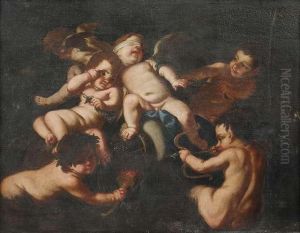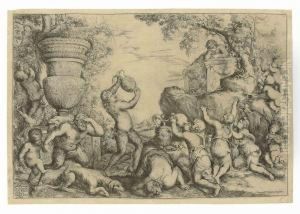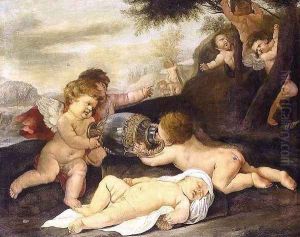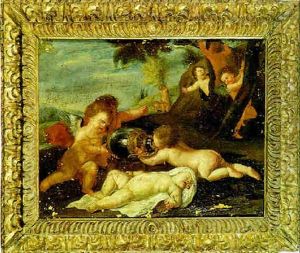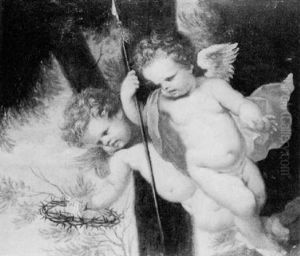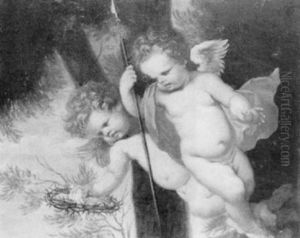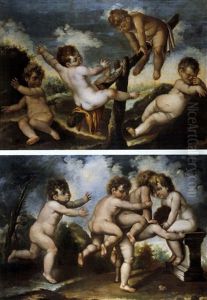Giovanni Andrea Podesta Paintings
Giovanni Andrea Podesta was an Italian artist born in the early 17th century, specifically in 1608. He belonged to the Baroque period, a time characterized by dramatic use of light and color, elaborate decoration, and expressive figuration. Podesta's work, however, remains relatively obscure in the broader context of Baroque art, overshadowed by the luminaries of his time such as Caravaggio, Bernini, and Rubens.
Podesta's artistic journey began in Genoa, a city known for its vibrant artistic scene during the Baroque era. Although specific details about his early training are scant, it is believed that he was influenced by the works of local painters and the influx of art from other parts of Italy and Europe. His work encompassed both religious and secular themes, typical of the Baroque era, where artists were commissioned by the church as well as by wealthy patrons to create artworks that reflected the grandeur and spirituality of the time.
Throughout his career, Podesta developed a style that while adhering to the Baroque principles, also showcased a unique blend of realism and emotion. His paintings are noted for their detailed depiction of figures and use of light, which added a sense of depth and realism to his compositions.
Despite his contributions to the Italian Baroque movement, Giovanni Andrea Podesta did not gain the same level of fame as some of his contemporaries. Little is known about his patrons or the specific commissions he undertook. However, existing works attributed to him indicate that he was a skilled painter who managed to capture the essence of the Baroque spirit.
Podesta's death in 1674 marked the end of a career that, while not widely celebrated today, contributed to the rich tapestry of Italian Baroque art. His works, though less known, provide valuable insights into the diversity of styles and themes explored by artists of his time. As with many artists of the Baroque period, a reassessment of Podesta's contributions could potentially elevate his status within the history of art.

